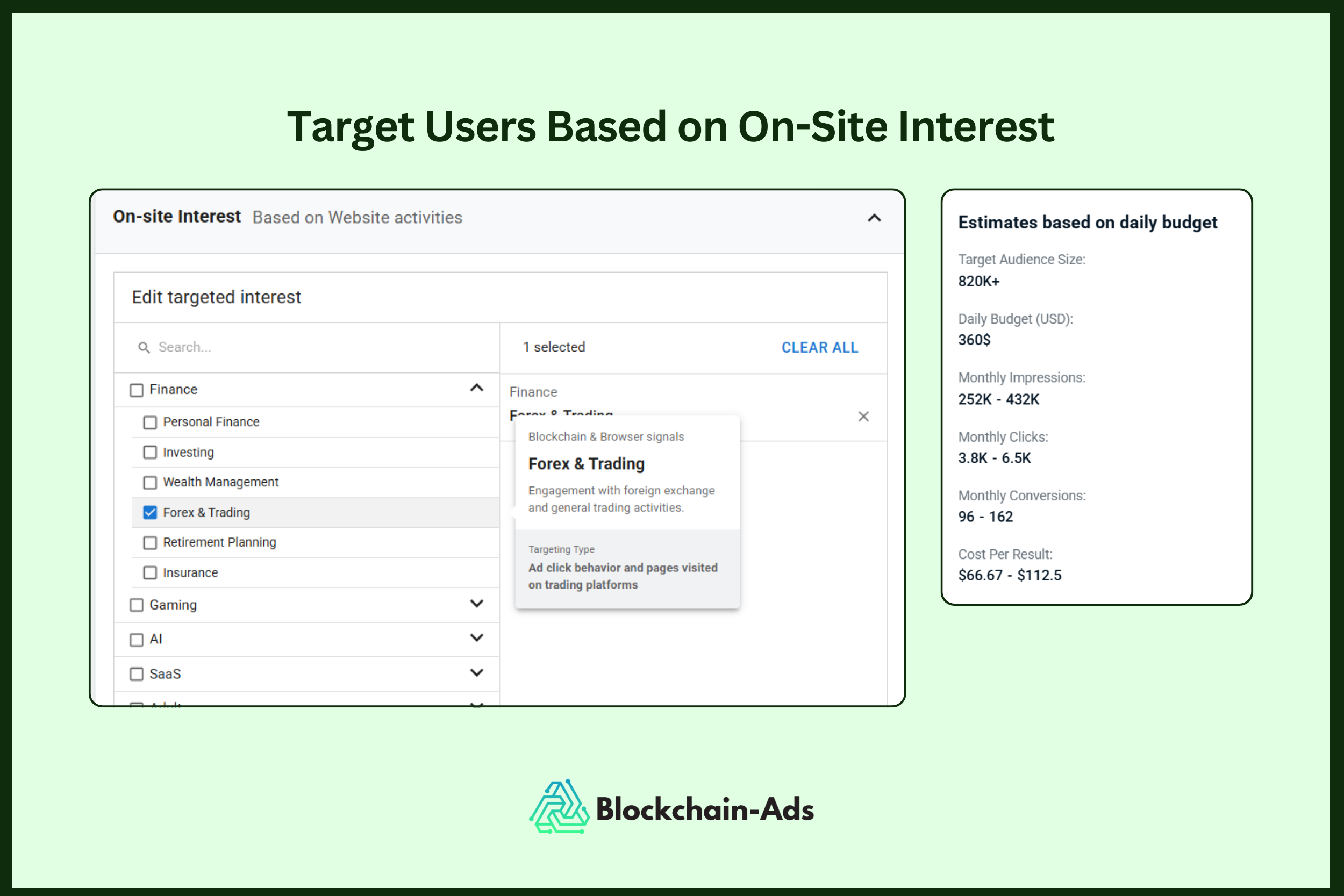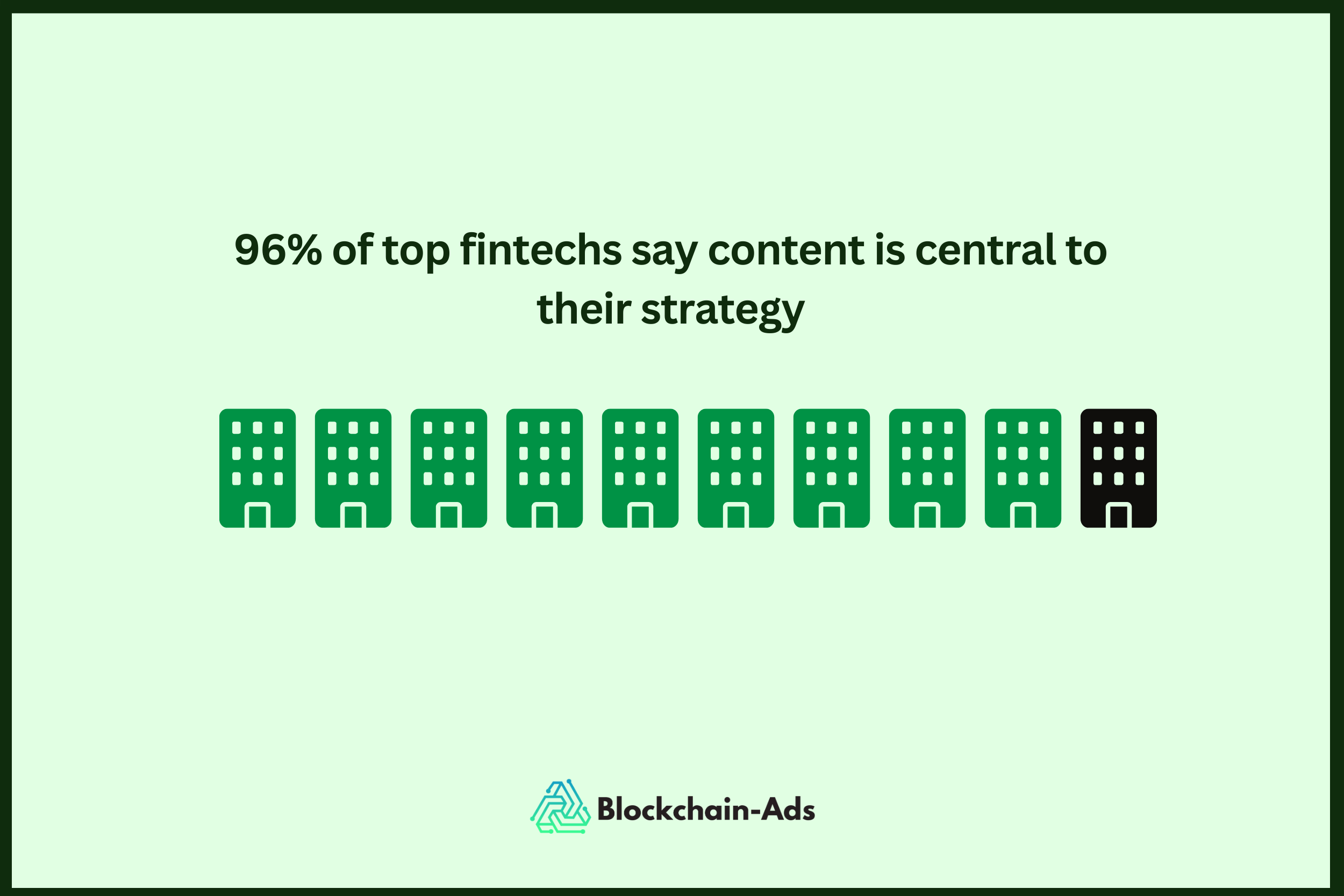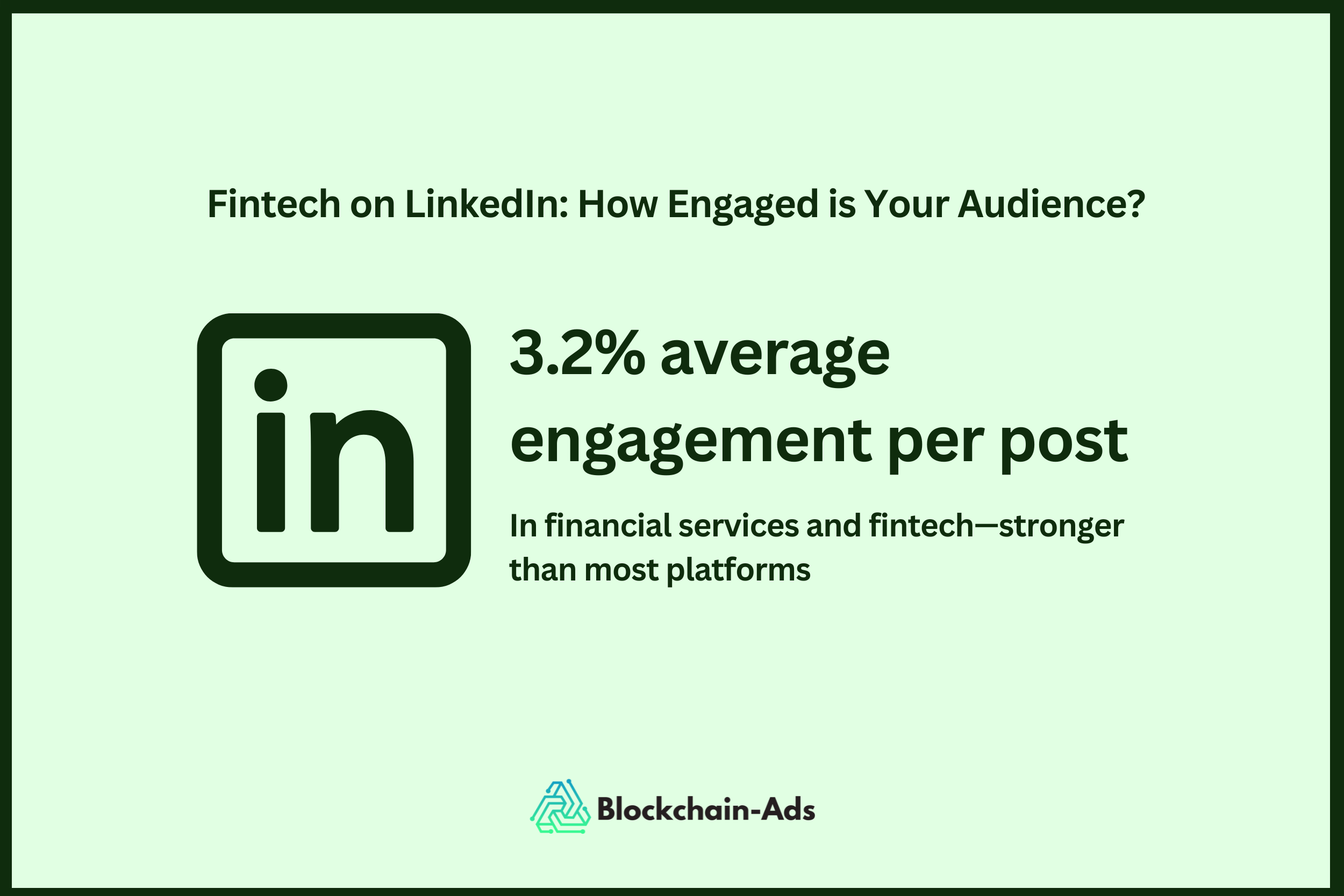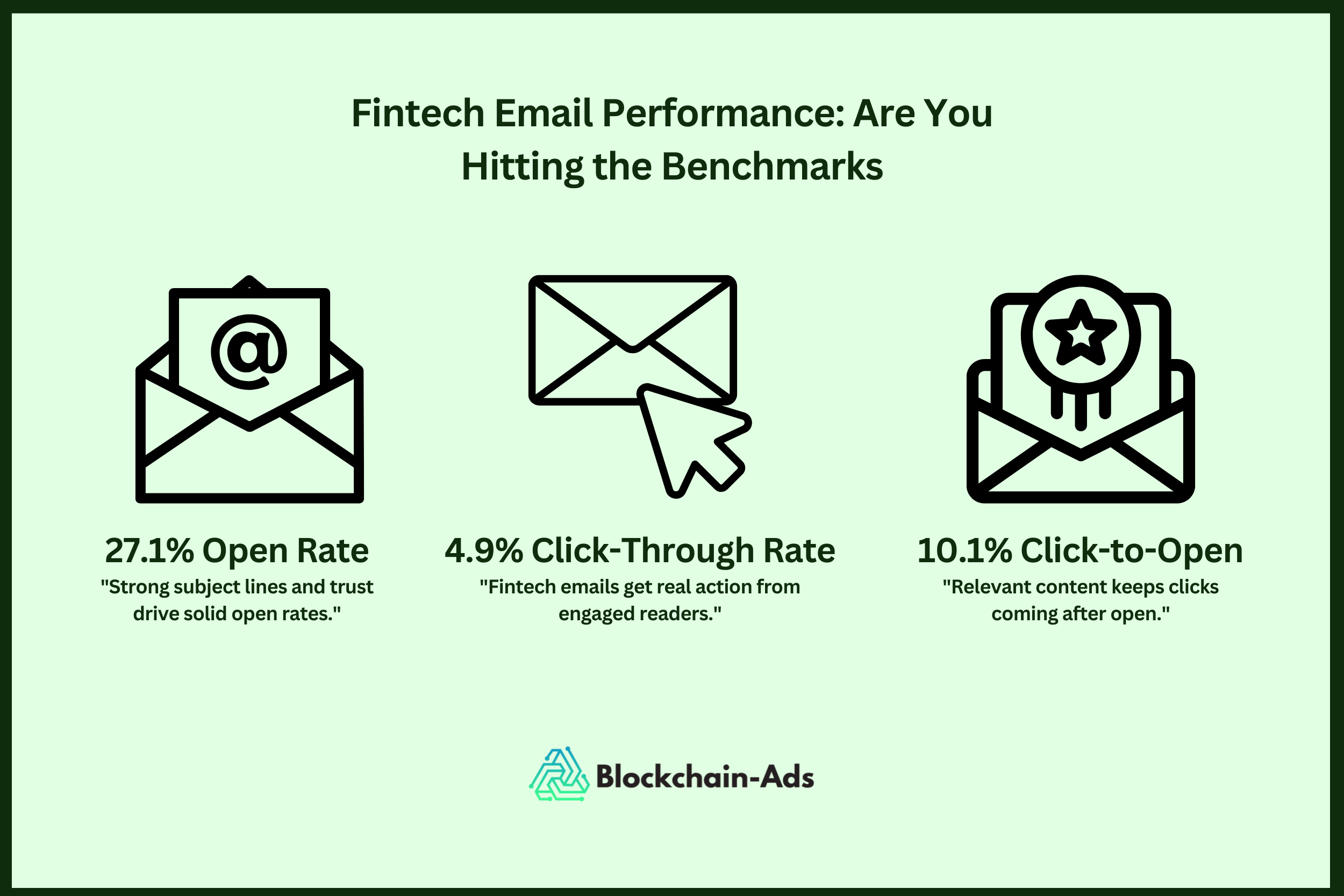7 Essential Fintech Marketing Strategies + Examples
Heading
- Cointelegraph Formula offers various ad formats to 8 million monthly readers across 190+ countries, leveraging its trusted name in crypto.
In 2025, there are about 381 fintech unicorns worldwide, valued at over $1.1 trillion. This includes both private and public companies worth $1 billion or more.
These unicorns make up just 1.27% of the total fintech market, which has over 300,000 startups globally.
Plus, competition grows daily, especially as Gen Z enters the finance market. How can you improve your chances when the odds are tough? Remember, 75% of venture-backed fintech companies fail in their first year.
This is where an effective fintech marketing strategy matters. A good plan helps you gain traction and compete well in fintech.
Here are the top fintech marketing strategies to increase customer motivation and engagement.
- Run paid ad campaigns
- Create valuable content
- Be present on LinkedIn
- Optimize for search engines and AI
- Launch email campaign
- Start an affiliate program
- Implement gamification
Let’s begin with a quick overview of fintech marketing.
What is fintech marketing?
Fintech marketing involves a set of strategies tailored to promoting financial technology firms. These companies leverage new technology to enhance financial services for consumers.
The right fintech strategies help you connect with customers and improve interactions. At their core, these strategies aim to:
- Increase traffic to your app or website
- Foster customer loyalty and build a strong community
- Expand your financial service offerings
- Streamline customer acquisition, leading to more sales and revenue growth
- Create opportunities for user-generated content and brand advocacy
Fintech content belongs to the YMYL (Your Money or Your Life) category. So, it needs more fact-checking and expertise to boost your marketing communication.
Marketing strategies for fintech companies to adopt
We'll explore the most effective fintech marketing strategies now. These strategies can help fintech companies like yours succeed. Here's a closer look at each strategy.
1. Run paid ad campaigns
Paid fintech ads help you reach potential customers who want your services. These targeted ads let you focus on the right audience. This way, you’ll have a better chance of turning them into paying customers.
Think of yourself as a fintech company. You want to draw in new clients who are looking for:
- Cross-border payments
- Checking currency exchange rates
With targeted ads, you can focus on these people and send your message right to them. This raises the chances of turning them into customers.

One way to do this is by leveraging interest-based targeting and demographics. You can target forex traders who visit trading and finance websites.
This targeted method helps your message reach people ready to act. This makes it more likely they will respond to your ad.
Moreover, with paid ads, you have complete control over your budget and ad placement. This means you can:
- Set a budget
- Bid on ad space
- Track your return on investment with precision
Using paid ads effectively can enhance your marketing strategy and help you connect with the right customers.
Example: Binance
Binance, a leading fintech unicorn, launched a paid ads campaign on Blockchain-Ads to expand their user base. The campaign focused on the Asia Pacific region and lasted for 60 days.
The campaign yielded impressive results:
- Over 4,600 new users onboarded within the first 30 days.
Binance effectively reached their target audience using two key Blockchain Ads' capabilities:
- Blockchain behavior targeting: Analyzes users' on-chain activities.
- On-site interest targeting: Pinpoints users' preferences.
This focused strategy helped Binance expand in three main areas: the Middle East, Southeast Asia, and Eastern Asia.
2. Create valuable content
Content marketing is the key to winning over your audience in the long run. For success in fintech, you need to work consistently and focus on creating valuable content.
Leading fintech brands owe their success to a diverse content strategy consisting of these types of content:
- Blog posts
- Videos
- Infographics
- Social media updates

Creating engaging content is not just about writing stylishly or adding visuals. It's about crafting a narrative that resonates with your target audience. This narrative should:
- Address their concerns.
- Inspire them to take action.
Fintech companies can use this approach to turn casual visitors into loyal customers. This helps boost business growth and encourages advocacy.
Example: Wise
Wise (formerly TransferWise) uses content as a key growth and brand trust strategy. The fintech focuses on clear transparency, simplicity, and teaching users about fees, processes, and money transfers. This often clarifies what traditional banks tend to hide.
Some key tactics include:
- Comparison articles: Wise shares detailed comparisons with PayPal, Revolut, and traditional banks. It highlights fees, exchange rates, and processes.
- Localized guides: Wise creates practical guides for different countries and currencies. For example, "How to open a bank account in Germany as an expat."
- Product education: Wise reveals the hidden costs of international money transfers. They use simple words and charts to highlight clear, low fees.
This strategy engages users during key moments, like moving abroad or sending money overseas. It builds trust through honesty in an industry where transparency is rare. Their SEO-driven content also supports organic growth effectively.
3. Be present on LinkedIn
Many fintechs are careful about social media marketing, and they have good reasons. Busy platforms such as Facebook, Twitter, and Instagram make it difficult to stand out. Reaching your audience can feel challenging there. Unless you are a B2C fintech, there's almost no reward for investing in these platforms.
However, if there is one social media platform that makes sense to invest in as a B2B fintech company, it’s LinkedIn.

LinkedIn stands out as a haven for B2B thought leaders in the fintech space. Almost every key person, from industry experts to company founders, is on the platform in some way. This concentration of high-level professionals creates a fertile ground for fintech companies to:
- Showcase their expertise
- Establish thought leadership
- Build meaningful connections
When done correctly, LinkedIn can produce huge returns. It cements its position as a primary driver for leads and deals for your fintech company.
Example: PayHive
PayHive, a payment processor, used LinkedIn to connect with small business owners. Their ad was clear and relatable. It displayed how much a typical bakery loses to payment processing fees from competitors, showing the advantage of choosing PayHive instead. The ad featured clear, concrete math and a visual comparison chart.
Results:
- 22% click-through rate (5× industry average)
- 83 new sign-ups in 48 hours
The LinkedIn campaign worked well because it focused on a clear pain point. It also included specific numbers and had a simple value proposition. This was all aimed at attracting LinkedIn's professional audience.
4. Optimize for search engines and AI tools
AI assistants like ChatGPT, Perplexity, and Google’s AI Overview are changing how people research. So, your content must be easy to access, not just focused on search rankings.
These AI tools share some SEO principles, but they focus more on clarity and directness. This means you need to create clear, detailed content that answers specific questions. Also, check if your content appears in AI-driven responses.
Some tactics currently being explored include:
- Publish targeted content on key business topics on your website and on external sites. This can boost the chances of being referenced by AI tools.
- Using tools like Semrush’s Brand Radar to monitor appearances in AI search results.
- Keeping FAQ and product pages updated with precise, useful answers.
- Concentrate on high-intent topics, even if they don't rank high in searches. AI tools usually rely on clear and well-structured content, no matter where it ranks.
AI systems surface content that thoroughly and helpfully answers questions. Focusing your content on actual user questions can enhance visibility in regular search and AI-based discovery.
Example: Wise in Google’s AI Overview
When you search “What are the top cross-border payment apps?” on Google, the AI Overview highlights Wise with competitors like Remitly, Revolut, and Western Union.

This shows that clear, well-structured content about Wise is being noticed. It's not only found through traditional search but also by AI-driven summaries. These summaries play a bigger role in how people discover fintech brands and make decisions.
Fintech brands should make content that clearly answers users' questions. This matters more now, as AI tools shape what users see first.
5. Launch email campaign
Email campaigns provide fintech brands with a direct line to their target audience. This is especially important for those who may not have found their online content otherwise.
By crafting well-targeted emails, brands can:
- Address specific pain points
- Answer questions users have
- Foster trust with their audience

This connection encourages users to explore the brand's offerings more deeply. For instance, a fintech company that focuses on cryptocurrency trading can design an email campaign that:
- Educates users on the benefits of diversifying their portfolio
- Simplifies complex financial concepts
- Builds credibility with potential customers
As a result, users are more likely to engage with the brand, leading to increased conversions and loyalty.
Example: WealthSimple
Wealthsimple, the Canadian investment platform, runs highly effective email campaigns designed to convert sign-ups into active investors.
Their approach includes:
- A welcome sequence that explains key investment concepts in a simple, conversational tone.
- Automated reminders prompting users to complete account setup if they pause partway.
- Clear visuals and jargon-free explanations that make investing accessible and build trust.
Importantly, Wealthsimple doesn’t overwhelm subscribers—they send roughly 1.1 emails per week, maintaining consistent engagement while minimizing fatigue.
One of their targeted nurture campaigns delivered measurable business impact:
- A record month in net deposits,
- 20% of email recipients registering via mobile,
- 25% of registrants being new clients.
Segmented email flows can effectively guide fintech customers through onboarding. This approach leads to clear, positive outcomes.
6. Start an affiliate program
Many fintech companies are unsure about using affiliate marketing. But there’s no doubt it works. Around 81% of brands use affiliate programs and get an average of $15 back for every $1 spent.
Many financial businesses, such as banks and card companies, use affiliate marketing. Even governments and public banks run affiliate programs, teaming up with thousands of partners. Why? Because affiliate marketing is low risk and often brings great returns.
Affiliate programs work on a pay-for-performance model (also called CPA). That means fintechs only pay when they get real results, like new sign-ups or sales. This helps them save money, run more smoothly, and compete better.
Example: Revolut
Revolut has done this very well. With Revolut Perks, they give users cashback or discounts when they shop with partner brands. These offers reach Revolut’s 18 million users, helping both Revolut and its partners grow.
Affiliate marketing was a great fit for Revolut’s aim to grow quickly and work with top global brands. This approach also builds loyalty. Users are happy to stick with Revolut because they receive rewards.
7. Implement gamification
Gamification is one of the most popular marketing strategies for fintech companies. It’s growing so fast that the global gamification market is expected to hit $30 billion by 2025!
So, what is gamification? It means adding game-like features to regular tasks or activities. In fintech, it helps make the user experience better, motivate customers, and build good habits.
Things like badges, rewards, or progress bars are simple ways apps can feel more like a game. Fintech companies can benefit from working with expert developers. They help turn ideas into reality and make apps more engaging.
Gamification boosts user engagement and strengthens your brand. And in today’s crowded market, standing out really matters.
Example: Crypto.com
Crypto.com has embedded gamification at the heart of its app to drive user engagement and retention in the competitive fintech industry.
Their “Missions” feature encourages users to complete tasks such as making a trade, referring friends, or setting up recurring purchases. In return, users earn “diamonds”—an ”in-app currency—which they can use to unlock mystery boxes containing rewards like CRO tokens, sometimes worth up to $1,100.
Crypto.com has scaled this into a structured fintech loyalty program:
- 20 levels of rewards, each offering increasing perks such as up to 0.5% trading rebates and as much as 10% APR on crypto balances.
- Specific missions, for example: “Trade $20, earn 5 diamonds” or “Trade $500, earn 60 diamonds,” incentivize deeper platform usage.
This gamification approach has contributed to Crypto.com’s rapid growth. The fintech expanded from 10 million users in 2021 to over 100 million in 2024—a tenfold increase in just three years.
Crypto.com also ran several ad campaigns using Blockchain-Ads.
Wrapping up
The fintech world is crowded, with over 300,000 startups globally. Customers, especially Gen Z, expect more. This article highlights that success needs more than a great product. You also need a smart, layered marketing strategy.
Fintech companies can attract, engage, and keep users by:
- Running paid ad campaigns through fintech ad networks.
- Creating valuable content.
- Being active on LinkedIn.
- Optimizing for search and AI discovery.
- Launching effective email campaigns.
- Starting affiliate programs.
- Using gamification.
These strategies work together to create a meaningful user experience.
But marketing is just one part of staying ahead. Fintech is growing quickly. Each year, new technologies and customer behaviors transform the industry. To stay competitive, it’s important to keep an eye on what’s next.
👉 Be sure to check out our guide to the top fintech trends shaping 2025 and beyond.
Qualify and get acess to Blockchain-Ads
Lorem ipsum dolor sit amet, consectetur
Quick Definition

Talk with some of our current partners
View all success stories

Reach 12M+
Engaged Web3 users across 10,000+ websites and 37 blockchains.






.avif)
.png)





